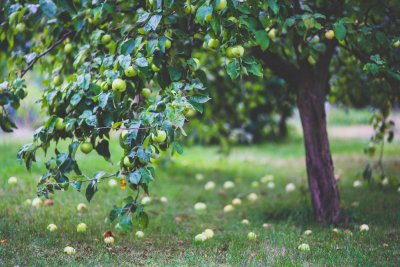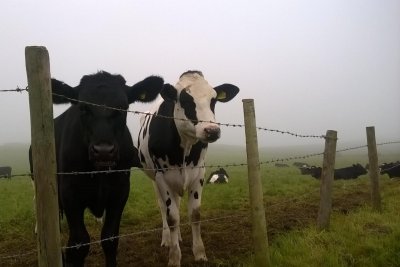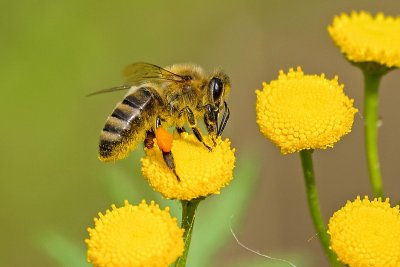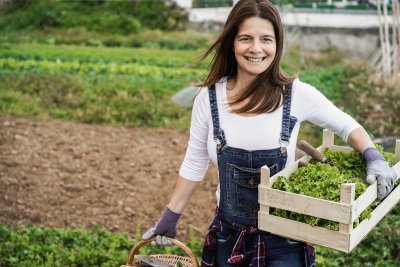News • Sustainable Farming Campaign
Human health risk from farm antibiotics
The Alliance to Save Our Antibiotics is calling on Minister of State for Agriculture, David Heath MP, to ban the use of fluoroquinolone antibiotics in poultry production to reduce the risk of antibiotic resistance in campylobacter and other infections in humans [1][2][3].
The best selling version of the drug is Baytril, manufactured by the German company Bayer. Campylobacter is the most common cause of food poisoning in the UK, affecting over 350,000 people a year. Chickens are the source of 50-80% of cases [4].
A ban would bring the UK into line with the US, where the Food and Drug Administration stopped the use of these antibiotics in poultry in 2005 because of increasing resistance in campylobacter [5]. Denmark, Finland and Australia also do not use fluoroquinolones in poultry.
The need for urgent action is highlighted by a recent EU report which has indicated for the first time the extent of fluoroquinolone use in poultry. It shows that the oral use of these antibiotics accounts for nearly half of their farm use in the UK and over three quarters of it throughout the EU [6]. Most oral use is in poultry and given as whole-flock medication in drinking water rather than individual-animal treatment, despite the antibiotics being classified as ‘critically important in human medicine’ by the World Health Organization [7][8].
When fluoroquinolones were first licensed for use in poultry in the UK in 1993, there was no known resistance in campylobacter from people who had not been treated with the antibiotics, but in the UK, by 2007, almost half (46%) the campylobacter food poisoning cases caused by the most common strain were resistant [9][10]. Fluoroquinolones are one of only two types of antibiotics used to treat campylobacter infections [11], and there are now about 150,000 fluoroquinolone-resistant campylobacter infections each year in the UK.
In 2008, the European Food Safety Authority said, ‘A major source of human exposure to fluoroquinolone resistance via food appears to be poultry’. Despite this, the use of fluoroquinolones in UK farming has increased by 70% over the past decade [12].
In a letter on behalf of the Alliance to David Heath MP, Soil Association Policy Advisor Richard Young, said; “Since it is clear that voluntary action by the industry has been ineffective in reducing fluoroquinolone use, we now call upon you to work with the European Commission and other Member States to introduce new legislation to prohibit the use of these critically important antibiotics in poultry production, and ensure they are only used in other farm animal species in strictly controlled situations. We recognise this could result in a small increase in the retail price of chicken, but we believe that people would be willing to pay a little more to reduce the risks to their health and help safeguard the effectiveness of such an important class of antibiotics into the future.”
A Food Standards Agency survey in 2007 found that four out of every ten retail chickens were contaminated with campylobacter, and that one in five samples of campylobacter were resistant to fluoroquinolones. There are also concerns about the rise of fluoroquinolone resistance in salmonella and E. coli. The European Food Safety Authority has said that ‘resistant Salmonella and Campylobacter involved in human disease are mostly spread through foods’ [13] and the WHO says that ‘resistant E. coli can spread from animals to people through the food chain’ [14].
In some European countries, fluoroquinolone use and antibiotic resistance in poultry and humans is even higher than in the UK [6][15], so the Alliance wants changes introduced across the EU and in all countries which export chicken to the UK. It also wants changes to regulations to ensure that in pigs, cattle and other farm-animal species, fluoroquinolones can only be used on rare occasions to save life, when it is known that no other antibiotics would be effective.
ENDS
For further information see the Soil Association briefing paper Fluoroquinolone use in poultry and antibiotic resistance in people
For press enquiries contact the Soil Association press office:
Natasha Collins-Daniel, Press Office Manager – 0117 914 2448 / 07827 925380
Ncollins-daniel@soilassociation.org
NOTES TO EDITORS
[1] Sunday 18 November is European Antibiotics Awareness Day
[2] Zac Goldsmith MP has tabled an early day motion calling for action to reduce the use of antibiotics on farms and for specific controls on critically important antibiotics, which includes the fluoroquinolones, http://www.parliament.uk/edm/2012-13/566
[3] The Alliance to Save Our Antibiotics (ASOA) was formed by Compassion in World Farming, Sustain and the Soil Association to raise awareness about the growing threat of antibiotic resistance passing from food animals to humans. The Alliance welcomes Government initiatives since 2006 to reduce unnecessary prescribing of antibiotics by GPs and hospital doctors but wants to see similar action on the veterinary use of antibiotics.
[4] Campylobacter caused an estimated 371,000 infections in the England and Wales in 2009. See http://www.food.gov.uk/policy-advice/microbiology/campylobacterevidenceprogramme/#.UJpTskOWh6E
The European Food Safety Authority has estimated that poultry is responsible for 50-80% of human infections: http://www.efsa.europa.eu/en/efsajournal/pub/1437.htm
[5] The fluoroquinolone ciprofloxacin is one of only two types of antibiotics that can be used to treat serious human campylobacter infections. Enrofloxacin, the most widely used fluoroquinolone in poultry production, is almost identical to ciprofloxacin. The FDA banned the use of fluoroquinolones in poultry because of increasing ciprofloxacin resistance in campylobacter infections in humans. The FDA said that:
- the use of fluoroquinolones in poultry caused the development of fluoroquinolone-resistant campylobacter species in poultry
- these fluoroquinolone-resistant organisms are transferred to humans and cause the development of fluoroquinolone-resistant campylobacter in humans
- fluoroquinolone-resistant campylobacter infections in humans are a health hazard.
- http://www.fda.gov/AnimalVeterinary/SafetyHealth/RecallsWithdrawals/ucm042004.htm
[6] European Medicines Agency, 2012. Sales of veterinary antimicrobial agents in 19 EU/EEA countries in 2010, http://www.ema.europa.eu/docs/en_GB/document_library/Report/2012/10/WC500133532.pdf
[7] Injectable fluoroquinolone products are available for use in pigs and cattle. Oral products are also available for piglets and calves but their use is limited.
[8] The World Health Organization has said that efforts to reduce risks to human health from the farm use of antibiotics should focus most urgently on the modern cephalosporins and fluoroquinolones, which they have classified as ‘critically important in human medicine’
WHO, 2007. Critically Important Antimicrobials for Human Medicine: Categorization for the Development of Risk Management Strategies to contain Antimicrobial Resistance due to Non-Human Antimicrobial Use, http://www.who.int/foodborne_disease/resistance/antimicrobials_human.pdf
[9] The most common type of campylobacter found in humans and in poultry is campylobacter jejuni.
[10] See attached briefing sheet for references and further information on resistance levels in humans and poultry.
[11] Antibiotic treatment is only needed in serious campylobacter infections.
[12] For data on use of fluoroquinolones in farming see VMD sales data reports at http://www.vmd.defra.gov.uk/public/antimicrobial_pubs.aspx
[13] EFSA, 2008. Foodborne antimicrobial resistance as a biological hazard, Scientific Opinion of the Panel on Biological Hazards, http://www.efsa.europa.eu/en/efsajournal/doc/765.pdf
[14] WHO, 2011. Tackling antibiotic resistance from a food safety perspective in Europe, http://www.euro.who.int/__data/assets/pdf_file/0005/136454/e94889.pdf
[15] EFSA, 2010. The Community Summary Report on antimicrobial resistance in zoonotic and indicator bacteria from animals and food in the European Union in 2008, http://www.efsa.europa.eu/fr/scdocs/doc/1658.pdf
Published Friday 16 November 2012
Sustainable Farming Campaign: Sustain encourages integration of sustainable food and farming into local, regional and national government policies.





